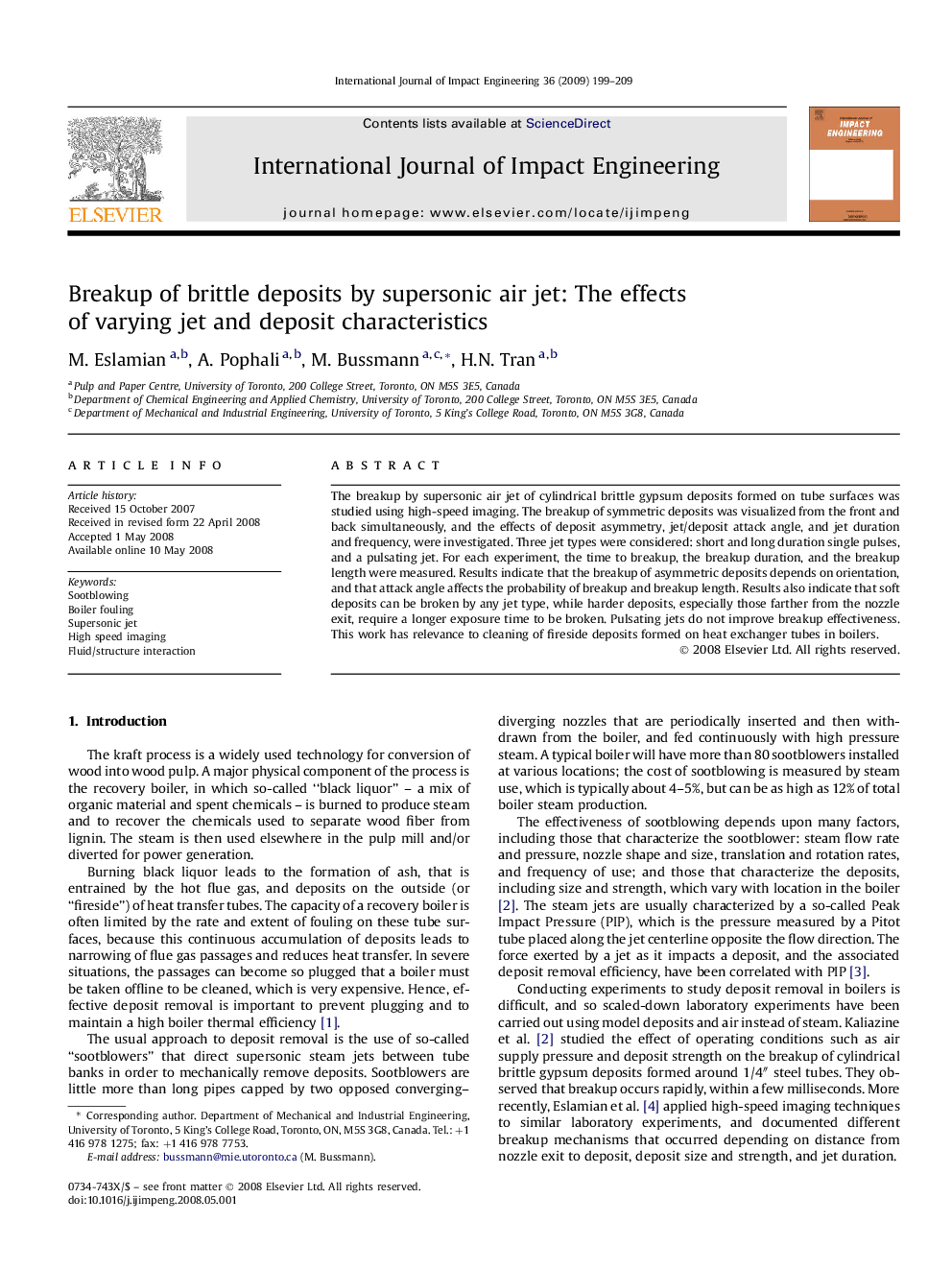| Article ID | Journal | Published Year | Pages | File Type |
|---|---|---|---|---|
| 783484 | International Journal of Impact Engineering | 2009 | 11 Pages |
The breakup by supersonic air jet of cylindrical brittle gypsum deposits formed on tube surfaces was studied using high-speed imaging. The breakup of symmetric deposits was visualized from the front and back simultaneously, and the effects of deposit asymmetry, jet/deposit attack angle, and jet duration and frequency, were investigated. Three jet types were considered: short and long duration single pulses, and a pulsating jet. For each experiment, the time to breakup, the breakup duration, and the breakup length were measured. Results indicate that the breakup of asymmetric deposits depends on orientation, and that attack angle affects the probability of breakup and breakup length. Results also indicate that soft deposits can be broken by any jet type, while harder deposits, especially those farther from the nozzle exit, require a longer exposure time to be broken. Pulsating jets do not improve breakup effectiveness. This work has relevance to cleaning of fireside deposits formed on heat exchanger tubes in boilers.
